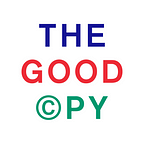David Jenkins, editor of ‘Little White Lies’
Brodie Lancaster
I discovered Little White Lies about five years ago, when I did a magazine exchange with a girl in England. I sent her some back issues of Frankie that I’d long ago destroyed by cutting out pictures to cover my high school exercise books, and she sent me the ‘Tetro’ issue of Little White Lies. I can’t help but think she got the rough end of the stick, because LWL instantly became my favourite magazine and the standard against which I’d measure every film publication. (Including, eventually, my own.)
I stamped down my nerves to ask one of my editor heroes David Jenkins (that’s a picture of him just up there) a few questions about the magazine’s tenth anniversary, what other publications he’s keen on, and how those stunning issues come together.
Brodie Lancaster: This is the tenth year of LWL. How much has the magazine changed since that first issue?
David Jenkins: I would say a lot, but hardly at all. Looking back at that first issue, all the raw ingredients were still there — this concept of exploring movies through a less conventional lens, but also the way the magazine has traditionally leaned heavily on illustration rather than stock/press photography. You can place issue one next to issue 58, and the connection is obvious. A certain evolution has taken place — which is only natural for any product wanting to translate as fresh and vital in the public eye — but the core values are exactly the same, and that’s what matters.
I remember watching the video of you guys hard at work making the ‘Black Swan’ issue a few years ago and there was a lot of frustrated hair-pulling going on before the printer rollers started moving. What do you and the team when you’ve closed an issue and sent it off to print?
This may sound like a lame answer, but the issue is only closed when the next issue is on the shelves. Following the toil of actually producing a print issue, we then have to usher it out into the world. Without trying to put too grandiose a spin on it, it’s a little like the birth cycle: the magazine is born (per the Black Swan video), and then we have to quickly teach the magazine to walk and talk for itself. Which is a far, far tougher challenge.
The recent 1994 issue of LWL was a sideways step from your usual focus on one film or director in each issue. What was the thinking behind this theme? Was there just so much good stuff happening that year that you couldn’t not?
One reason is that we always like to remind ourselves that, as independent magazine makers, we’re masters of our own destiny, and we felt like the time was right to give our readers and exciting surprise — something a little different from the norm. We’re driven by creativity as much (if not more) as we are by movie schedules, and we just wanted to ask ourselves, what would an issue of LWL have looked liked if it was around twenty years ago? Who would be the cover star? Who would we be writing about? What films would we be reviewing? It was a one-off project, but we had great fun making it.
One of the things I love most about LWL is how harmonious the content and artwork are, particularly with something like issue 44, ‘The Master’. (Which also cemented why it’s so integral that the magazine be in print — it came with a pair of 3D glasses and some pages were double-printed, with different content emerging depending on whether you looking through the red or blue lens of the glasses.) It’s kind of a chicken-and-egg question, but what comes first: the story or the design concept?
I have been editor for about ten issues now, but in my experience, it’s generally the cover film/theme that comes first. However, that choice of cover film is often inspired by what would make for a good visual treatment. The general process is: the editorial team will pitch an idea to the design team, and then they will go away, develop a creative route, and then pitch it back to the editorial team. It’s always collaborative.
I revisit heaps of films when I want to shut my brain off or stop analysing what I’m watching for one second. Do you have a guilty pleasure movie, or one you return to time and again?
I don’t really believe in the concept of guilty pleasure as I think, objectively speaking, all pleasure is sincere. But a film I do like to watch regularly is Sister Act 2: Back in the Habit.
What other indie mags are you really excited about at the moment?
Well, I’m going to use this opportunity to give a shout-out to Huck magazine, which is also published by TCOLondon. Aside from the connection, though, they are just doing some incredible things at the moment, really busting their humps to produce magazines that will impress readers and have a social impact. Their 50th issue (which they are working on at time of writing) is a major, major event.
Every film reviewed in LWL is given a score for Anticipation (before), Enjoyment (during) and In Retrospect (after). What was the last film you saw that scored high on each metric?
A wonderful movie called Phoenix by Christian Petzold, which is one of my favourites of 2015. My review is published in issue 59 of the magazine.
This interview originally appeared in print in The Good Copy Gazette issue one. We originally published this article on our old website on 26 August 2015.
